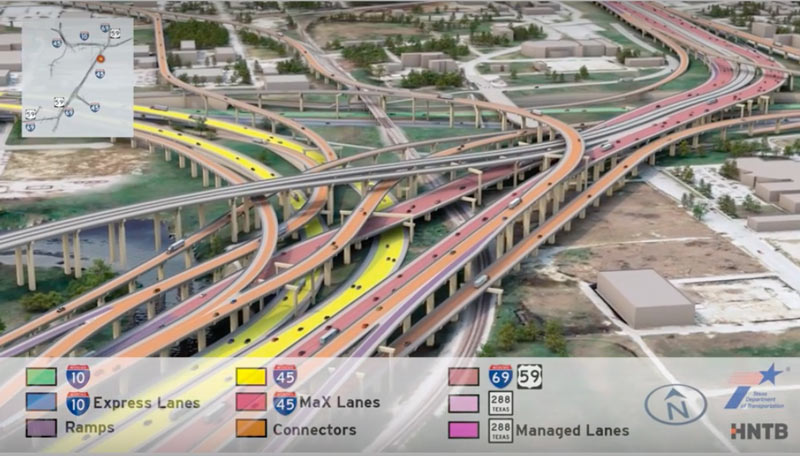Because the project as it now stands would be bad for a lot of kids.
Principal Shawn Nickerson can see the highway connector from Bruce Elementary’s basketball court. Cars whiz by, spewing dangerous pollutants into the air. And if the proposed Interstate 45 expansion moves forward, Nickerson fears the children will be at greater risk. Some already moved because their apartments were sold to make way.
Federal officials earlier this year paused the state’s planning efforts on a rebuild of I-45 and various highway connections because of concerns about how it could affect communities of color and low-income neighborhoods. Critics recently filed a federal complaint calling for greater scrutiny of those impacts.
Bruce Elementary serves as a striking example of the project’s potential harm, following a history of environmental injustice in Greater Fifth Ward. Houston ISD relocated the school in 2007 from a spot across from a lead-contaminated industrial site. It was put near the juncture of Interstates 69 and 10, northeast of downtown. Advocates say students had among the district’s higher asthma rates.
Some of the kids live in a Houston Housing Authority property across I-10, walking on a bridge over 10 lanes of traffic, never escaping the fumes. The city earlier sold the state another housing authority property where students live. Fifth Ward residents navigate too among train tracks, concrete batch plants and a rail yard contaminated with likely cancer-causing creosote, used to treat rail ties.
“Ms. Dr. Nickerson,” as students call her, can’t fix all that, but she considers it her job to advocate for better air quality and traffic safety. Her students play outside during recess. Some take puffs from inhalers at the nurse’s office beforehand.
The $9 billion I-45 project, the largest freeway redo in Houston’s history, includes expansion work from central Houston all the way up to Beltway 8 in Greenspoint. It also reroutes the highway’s path around downtown. Instead of curling west as it does now, I-45 would circle to downtown’s east alongside I-69, until it meets I-10, right by Bruce Elementary.
A newly built interchange there would include a connector that would cut right by the northwest corner of the school, seeming to come as close as possible without actually taking any school property. “Our students, when they go out to recess, what is that going to be like for them?” Nickerson asked. “What does that mean in terms of safety? Even beyond just outside, our indoor air quality, how will that change?”
[…]
Concerned about various impacts, Air Alliance Houston in 2019 helped coordinate an assessment of how schools could be affected. The environmental advocacy group looked specifically at nine schools, including Bruce. Researchers noted that children were especially vulnerable because their bodies are still developing.
Traffic-related air pollution can cause asthma to develop, the report says. Poor air quality could affect their day-to-day lives, perhaps causing missed school days from being sick and lower academic performance.
Advocates at the time suggested TxDOT build tree-lined buffers, install air monitors and not allow vehicles to idle in the carpool line. But then the argument around the project grew so large that detailed requests got lost, said Harrison Humphreys, an advocate Air Alliance Houston.
TxDOT says in the story that the project will bring about air quality improvements, and that they have reached out to the parents at Bruce Elementary. Any infrastructure project is going to have some negative effects on some people. Ideally, we try to minimize that while we maximize the benefit to the community as a whole, and we compensate the people who are being negatively affected. The deeper issue here is that the same people have been harmed by I-45 from the beginning, they continue to be harmed by it, and they’ll be first in line to be harmed by the expansion. The rest of us won’t be. This is why there are federal complaints about the project, and why Harris County filed its lawsuit, which is now on pause pending current negotiations. If we can’t come to an equitable resolution, then we really shouldn’t make the same people pay a higher price for the expansion of this highway.

